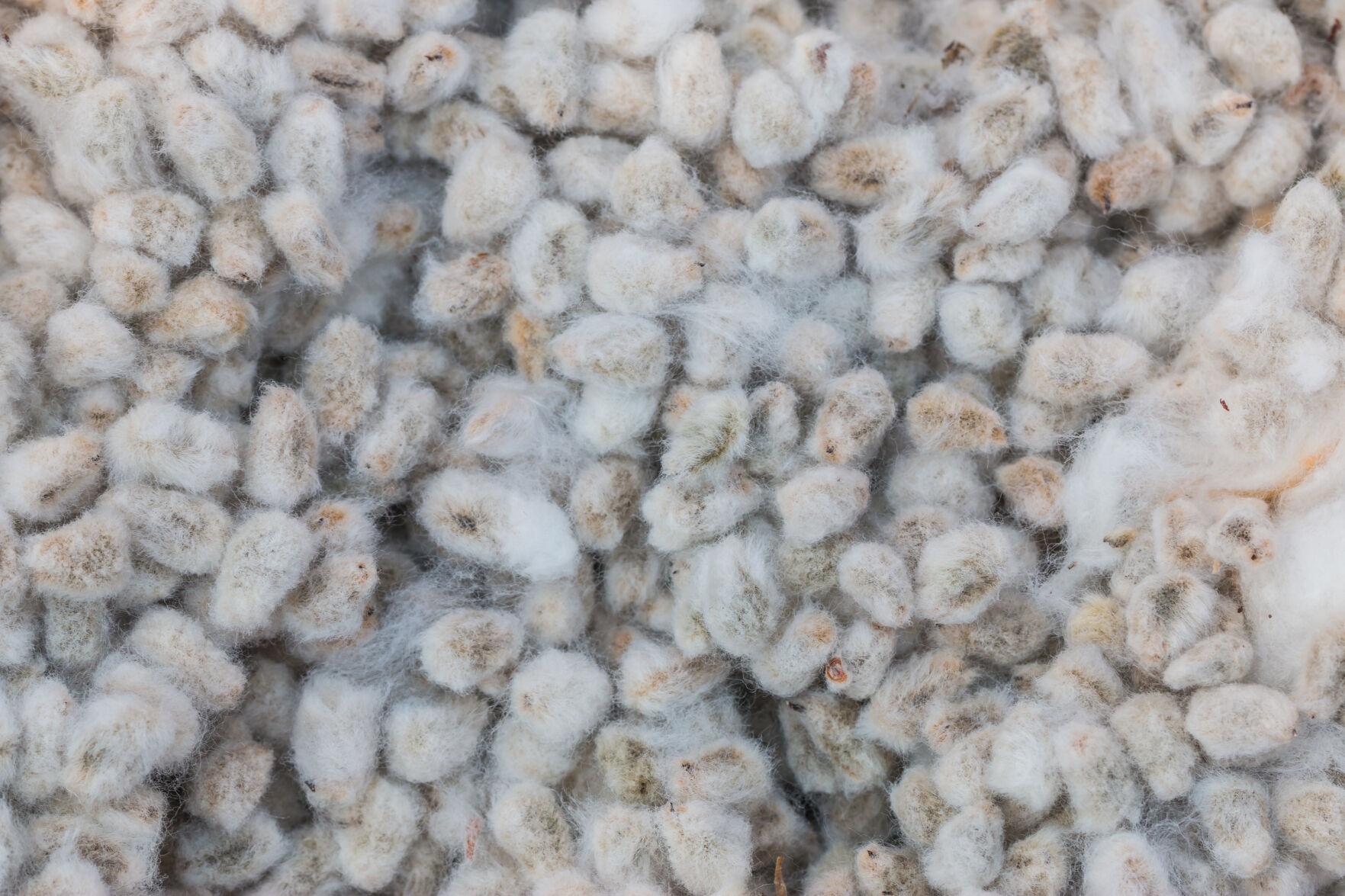A New Mexico cattle producer has been feeding whole cottonseed for many years, and she believes other ranchers could also benefit from the additive.
Alisa Ogden, Loving, New Mexico, lives on a third-generation family farm with a diversified crop base that includes growing cotton along with a cow-calf operation. Cottonseed is an efficient feed supplement, she said. The fuzzy cottonseed is available to producers after it goes through the ginning process.
Whole cottonseed content on a dry matter basis includes 23% protein, 20% energy and 24% crude fiber, according to Cotton Incorporated. The seed’s kernel is a source of energy and protein. Its fiber is found in the linters, which are short, white, hairlike strands that remain on each seed following ginning. Whole cottonseed should not be fed to young, pre-ruminant calves.
Ogden mixes fuzzy cottonseed with other feed for her weaned calves and it is popular with her beef cattle.
The cottonseed will be the first feed out of the bunks, she said. The cottonseed is small enough it needs to be in a bunk and should not be fed on the ground or in the pasture.
Impressive weight gains
Weight gains have achieved 50 to 100 pounds more per head when fuzzy cottonseed was fed on a daily basis, Ogden said. It is typically fed with traditional feed products that include alfalfa hay, sudan, wheat, barley and triticale. Alfalfa protein is about 17% to 18% in the Loving region.
The fuzzy cottonseed is often part of a regimen for a three- to four-month period and that is where the higher weight gain total occurs.
Her operation tries to wean calves at about 500 to 600 pounds and generally targets shipping out when they reach 800 to 900 pounds. She starts the whole cottonseed additive process right after weaning regardless of weight.
Ogden credits her dad for his ingenuity as he started feeding cottonseed about 50 years ago. Her dad recognized the opportunity as he raised cotton near a gin and used the cottonseed as a feed additive when the family started backgrounding and retaining ownership of beef cattle.
Setups can assist
Not everyone backgrounds cattle, she said, and in her case her family has the facilities. Other growers in the region also tap into cottonseed feed, depending on the layout of their operation and equipment they have in place.
“Because we have both a farm and a ranch we have the facilities on the farm with the tractors and the grinders for the feed that is available,” Ogden said. “Plus, we raise our own feed and rarely have to buy outside.”
Her feed market is competitive. Dairies also purchase whole cottonseed as an additive to their rations.
The gin she uses to secure her operation’s cottonseed is in Artesia, which is about 60 miles north of Loving. Ogden said the higher fuel and transportation are important considerations, but she continues to believe in the feed.
Growth in cotton acreage
An increasing interest for cotton production in Oklahoma and Kansas can mean more opportunities for ranchers in those regions, and Ogden wants to dispel misconceptions about fuzzy cottonseed.
“One of the misconceptions is there are a lot of breeders who think that if you feed fuzzy cottonseed to bulls or cows it affects their fertility,” she said. “It is the amount that you feed that will affect the fertility.”
Cotton Incorporated has been funding research to study the usage of fuzzy cottonseed, and the formula is what Ogden also uses in her operation.
“You don’t want to feed more than 1 to 2 pounds of fuzzy cottonseed per day per animal,” she said, adding they mix it with other traditional feed and distribute it into the bunks. “They get enough oil in that seed to be able to help utilize the other feeds they are eating. You have to feed it in a bunk facility. You just can’t ‘free choice’ out on the ground.”
One option for some producers—depending on their setup—is possibly putting feed bunks in the pasture, she said.
Ogden said in her operation she sees the results.
“You can hear those calves going through that feed and you can hear them crunching away,” Ogden said. “They really utilize it quite well.”
The fuzzy cottonseed is a proven additive to feed yearlings and cattle in feedlots, she said. Ogden has also used cottonseed as a supplement to help treat a sick animal. “I don’t know why but it seems to help them to get well quicker. I believe the energy source in the cottonseed oil may play a part.”
Additional information has been sourced from land-grant universities including Oklahoma State University, Texas Tech University and the University of Arkansas.
Cotton Incorporated has noted that whole cottonseed can be used to supplement poor quality grass hay for pregnant and nursing cows, supplying energy and protein in a single feed ingredient.
Whole cottonseed’s fat content helps improve body condition, which is vital for successful breeding. Studies from Oklahoma State and Arkansas found that cotton byproducts can be effectively used as a source of fiber, fat and protein in feedlot rations without adverse effects on performance or carcass characteristics. Another study conducted by OSU and Texas Tech found that whole cottonseed or products derived from it can replace feedstuffs commonly used in beef cattle’s finishing diets with no adverse effects on animal performance or carcass characteristics.
She encourages beef producers to reach out to universities in their states to get further insight into how cottonseed can work in their livestock’s diet. They can then take the information to their nutritionist to see if it is a fit for their operation and how to tailor it to their rations.
Dave Bergmeier can be reached at 620-227-1822 or [email protected].




